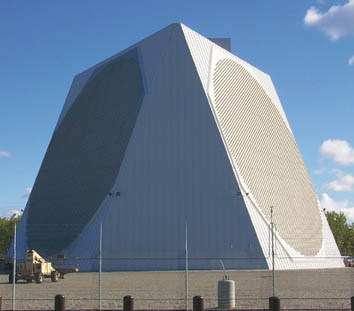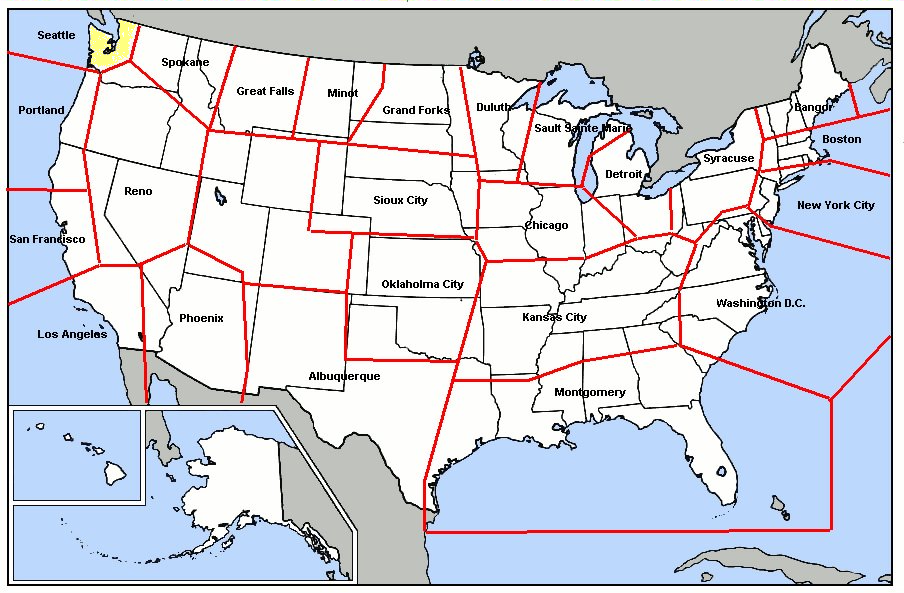|
RCAF Station Parent
RCAF Station Parent was a Canadian early warning radar station and formed part of the Pinetree Line air defence network. Ground was broken in 1951, and by 1954 the station was operational. 14 Aircraft Control & Warning (AC&W) Squadron was the lodger unit operating the facility. In 1963 the station was moved to Semi-Automatic Ground Environment (SAGE) operation; in 1964 it closed, as it was deemed redundant with more powerful radar stations coming online in the sector. Present day Nothing remains of the operational installation other than the foundations, guard rails, and paved parking lot at the top of the mountain. A communications antenna has been erected at the site of the original operations building. Some of the buildings at the domestic site below, where station personnel lived, are still inhabited. Supporting buildings such as the hospital, sewage treatment facility, and mess hall have long been demolished and removed; only their foundations remain. See also * List ... [...More Info...] [...Related Items...] OR: [Wikipedia] [Google] [Baidu] |
Pinetree Line
The Pinetree Line was a series of radar stations located across the northern United States and southern Canada at about the 50th parallel north, along with a number of other stations located on the Atlantic and Pacific coasts. Run by North American Aerospace Defense Command (NORAD) (after its creation), over half were staffed by United States Air Force personnel with the balance operated by the Royal Canadian Air Force. The line was the first coordinated system for early detection of a Soviet bomber attack on North America, but before the early 1950s radar technology quickly became outdated and the line was in full operation only for a short time. History Plans for what would become the Pinetree Line were underway as early as 1946 within the Permanent Joint Board on Defense (PJBD), a Canadian-U.S. organization. However, the costs of running such a system in the post-war era was too high, and instead Canada concentrated on the areas around Ontario and Quebec, while the Unite ... [...More Info...] [...Related Items...] OR: [Wikipedia] [Google] [Baidu] |
Parent, Quebec
Parent is a community in northern Quebec, Canada, located within the city of La Tuque and about north-west of La Tuque's town centre. In 2011, it had a population of 611.Statistics Canada 2006 Census Parent community profile/ref> During the summer, it becomes the supply point for several dozen outfitters, and in the winter it is a major centre for the snowmobile industry. The Arbec sawmill, with 150 workers, is the main employer of the region. The Bazin River that flows through town is popular for 5- to 7-day canoe trips that end at the Gatineau River. History Parent was founded in 1910 when the National Transcontinental Railway was built through the area. It was named after Simon-Napoléon Parent, Québec Premier from 1900 to 1905 and Chairman of the Board of Transcontinental Railway from 1905 to 1911. In 1913, the Parish of Saint-Thomas was formed and two years later in 1915, the Parent Post Office opened. In 1947, the Village Municipality of Parent was established. The t ... [...More Info...] [...Related Items...] OR: [Wikipedia] [Google] [Baidu] |
Canada
Canada is a country in North America. Its ten provinces and three territories extend from the Atlantic Ocean to the Pacific Ocean and northward into the Arctic Ocean, covering over , making it the world's second-largest country by total area. Its southern and western border with the United States, stretching , is the world's longest binational land border. Canada's capital is Ottawa, and its three largest metropolitan areas are Toronto, Montreal, and Vancouver. Indigenous peoples have continuously inhabited what is now Canada for thousands of years. Beginning in the 16th century, British and French expeditions explored and later settled along the Atlantic coast. As a consequence of various armed conflicts, France ceded nearly all of its colonies in North America in 1763. In 1867, with the union of three British North American colonies through Confederation, Canada was formed as a federal dominion of four provinces. This began an accretion of provinces and ... [...More Info...] [...Related Items...] OR: [Wikipedia] [Google] [Baidu] |
Royal Canadian Air Force
The Royal Canadian Air Force (RCAF; french: Aviation royale canadienne, ARC) is the air and space force of Canada. Its role is to "provide the Canadian Forces with relevant, responsive and effective airpower". The RCAF is one of three environmental commands within the unified Canadian Armed Forces. As of 2020, the Royal Canadian Air Force consists of 12,074 Regular Force and 1,969 Primary Reserve personnel, supported by 1,518 civilians, and operates 258 manned aircraft and nine unmanned aerial vehicles. Lieutenant-General Eric Kenny is the current commander of the Royal Canadian Air Force and chief of the Air Force Staff. The Royal Canadian Air Force is responsible for all aircraft operations of the Canadian Forces, enforcing the security of Canada's airspace and providing aircraft to support the missions of the Royal Canadian Navy and the Canadian Army. The RCAF is a partner with the United States Air Force in protecting continental airspace under the North American ... [...More Info...] [...Related Items...] OR: [Wikipedia] [Google] [Baidu] |
Early Warning Radar
An early-warning radar is any radar system used primarily for the long-range detection of its targets, i.e., allowing defences to be alerted as ''early'' as possible before the intruder reaches its target, giving the air defences the maximum time in which to operate. This contrasts with systems used primarily for tracking or gun laying, which tend to offer shorter ranges but offer much higher accuracy. EW radars tend to share a number of design features that improve their performance in the role. For instance, EW radar typically operates at lower frequencies, and thus longer wavelengths, than other types. This greatly reduces their interaction with rain and snow in the air, and therefore improves their performance in the long-range role where their coverage area will often include precipitation. This also has the side-effect of lowering their optical resolution, but this is not important in this role. Likewise, EW radars often use much lower pulse repetition frequency to maxim ... [...More Info...] [...Related Items...] OR: [Wikipedia] [Google] [Baidu] |
Semi-Automatic Ground Environment
The Semi-Automatic Ground Environment (SAGE) was a system of large computers and associated networking equipment that coordinated data from many radar sites and processed it to produce a single unified image of the airspace over a wide area. SAGE directed and controlled the NORAD response to a possible Soviet air attack, operating in this role from the late 1950s into the 1980s. Its enormous computers and huge displays remain a part of cold war lore, and after decommissioning were common props in movies such as '' Dr. Strangelove'' and ''Colossus'', and on science fiction TV series such as '' The Time Tunnel''. The processing power behind SAGE was supplied by the largest discrete component-based computer ever built, the IBM-manufactured AN/FSQ-7. Each SAGE Direction Center (DC) housed an FSQ-7 which occupied an entire floor, approximately not including supporting equipment. The FSQ-7 was actually two computers, "A" side and "B" side. Computer processing was switched from "A ... [...More Info...] [...Related Items...] OR: [Wikipedia] [Google] [Baidu] |
List Of Royal Canadian Air Force Stations
This is a list of stations operated by the Royal Canadian Air Force (RCAF), or stations where RCAF units existed, from 1924 until unification into the Canadian Forces on February 1, 1968. Some of the RCAF stations listed in this article link to facility descriptions containing the prefix ''"CFB"'' (Canadian Forces Base) or ''"CFS"'' (Canadian Forces Station). These facilities were at one time RCAF stations, but changed to ''CFBs'' or ''CFSs'' following unification of the Canadian Armed Forces in 1968. Most former RCAF stations still in use by the Canadian Forces are still operated by the RCAF (renamed from Air Command or AIRCOM in 2011, from the use "air element" 1968–2011). During the 1990s, most RCAF squadrons on Canadian Forces Bases were reorganized into "wings" as the primary lodger unit. Consequently, many Canadian Forces Bases used as air force bases are frequently referred to without the prefix CFB, e.g., ''"CFB Greenwood"'' is also referred to as ''"14 Wing Greenwood" ... [...More Info...] [...Related Items...] OR: [Wikipedia] [Google] [Baidu] |
Canadian Forces Bases In Quebec
Canadians (french: Canadiens) are people identified with the country of Canada. This connection may be residential, legal, historical or cultural. For most Canadians, many (or all) of these connections exist and are collectively the source of their being ''Canadian''. Canada is a multilingual and multicultural society home to people of groups of many different ethnic, religious, and national origins, with the majority of the population made up of Old World immigrants and their descendants. Following the initial period of French and then the much larger British colonization, different waves (or peaks) of immigration and settlement of non-indigenous peoples took place over the course of nearly two centuries and continue today. Elements of Indigenous, French, British, and more recent immigrant customs, languages, and religions have combined to form the culture of Canada, and thus a Canadian identity. Canada has also been strongly influenced by its linguistic, geographic, and ... [...More Info...] [...Related Items...] OR: [Wikipedia] [Google] [Baidu] |


